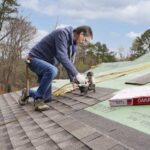Living near the coast has its perks. Beautiful sunsets, beach walks, fresh air.
But ask anyone who’s weathered a hurricane season and they’ll tell you the downsides too.
Those gorgeous ocean breezes turn into monsters when storms roll in.
I’ve seen what happens when homes aren’t built to handle coastal conditions.
It’s not pretty.
Windows blown out. Roofs peeled back like sardine cans. Foundations washed away.
But here’s the good news.
You don’t need to pack up and move inland. With the right upgrades, your coastal home can stand strong against what Mother Nature throws at it.
These aren’t just minor fixes either.
We’re talking about serious improvements that could mean the difference between minor roof repairs and total rebuilds after a big storm.
Ready to make your home stronger? Let’s jump into the upgrades that actually work.
Construction Upgrades for Coastal and Wind-Prone Area
When storms hit coastal areas, they don’t just bring wind.
They bring a whole menu of problems: flooding, flying debris, salt damage, and pressure changes that can literally blow your roof off.
That’s why the best protection comes from a complete approach—one that considers modern coastal architecture designs along with practical construction upgrades.
Think of these upgrades as links in a chain. Each one matters.
Skip one, and you’ve got a weak spot. That’s why it helps to invest in smarter solutions like Motorized Porch Enclosures.
These systems are designed to handle tough weather conditions without giving up the comfort and openness of outdoor living space.
But they’re just one piece of the puzzle.
Let’s look at each upgrade and how it works to keep your home safe.
Hurricane-Resistant Windows and Doors
Regular windows don’t stand a chance in hurricane-force winds.
Once they break, the whole house becomes vulnerable.
The wind gets in and can pressurize your home like a balloon, sometimes enough to pop the roof right off.
Hurricane windows have a special design with impact-resistant glass sandwiched between two layers of shatter-resistant film.
If something hits the window, it might crack but won’t shatter into pieces.
The frame gets beefed up too, with reinforced attachments to your walls.
For installation, you’ll want a pro who knows coastal building codes.
They’ll make sure the windows are properly sealed and anchored.
These aren’t just pop-in replacements.
A tip many people miss: pay attention to the ratings. Look for windows labeled to withstand winds for your area’s risk level.
Miami-Dade County standards are among the toughest, so products meeting those requirements are usually good choices even if you live elsewhere on the coast.
And don’t forget this: even the best windows need proper maintenance.
Check the seals yearly and replace any deteriorating caulking before storm season hits.
Reinforced Roofing Systems
Your roof takes the biggest beating during high winds.
Regular shingles can peel away like playing cards in just minutes when hurricane winds hit.
A reinforced roof system starts with the deck – the plywood underneath your shingles.
Using ring-shank nails instead of regular nails makes a huge difference.
They grip the wood better and resist pulling out.
Then comes a secondary water barrier, typically a peel-and-stick membrane that covers the entire deck.
For the outside layer, you’ve got options.
Metal roofing with proper fastening systems can withstand winds over 150 mph.
Concrete tiles work too, but they need extra reinforcement because they’re heavy.
Some new composite shingles are designed specifically for high winds and can be a good middle-ground option.
The weak spot in many roofs is where the roof meets the walls.
Hurricane straps or clips connect your roof trusses to the wall structure, preventing the roof from lifting off.
This small addition makes a massive difference in how your home performs during a storm.
When upgrading, don’t skip the inspection of your existing structure.
Some older homes need additional support in the attic to handle the weight of new materials.
Better to find out before the installation than during the next big storm.
Elevated Foundations and Flood Vents
Water damage often costs more than wind damage after storms.
Raising your home above the flood level is one of the smartest moves for coastal properties.
For new construction, consider a home on stilts or pilings that allows water to flow underneath.
For existing homes, you might raise the foundation or build up the ground around the home,
Making sure water flows away from the structure.
Flood vents are genius little additions for homes that can’t be elevated.
They’re basically openings in your foundation walls that allow water to flow through your crawlspace or garage instead of pushing against your walls.
The pressure from flowing water can collapse foundation walls, but flood vents prevent that pressure buildup.
Installing flood vents isn’t complicated, but placement matters.
You need one square inch of vent opening for every square foot of enclosed floor area.
Put them on opposite walls so water can flow through, not just in.
A bonus benefit: proper flood vents can lower your flood insurance premiums.
Keep documentation of your installation to show your insurance company.
Corrosion-Resistant Materials
Salt air is brutal on building materials. It eats through standard metals at an alarming rate.
I’ve seen ordinary screws turn to rust within months in coastal areas.
Start with the hidden stuff – the fasteners.
Stainless steel or hot-dipped galvanized fasteners cost more upfront but save thousands in repairs later.
For exposed metal like railings or light fixtures, marine-grade materials are worth every penny.
PVC trim instead of wood eliminates painting maintenance and won’t rot.
Fiber cement siding stands up to salt and humidity better than vinyl or wood.
For decks, composite materials might cost more initially but won’t warp, crack, or need constant refinishing.
The mistake many people make is mixing materials.
If you use stainless steel screws but regular steel brackets, you create what’s called galvanic corrosion – basically, one metal sacrifices itself to protect the other.
Everything that touches needs to be compatible.
When selecting materials, look for products specifically rated for coastal use.
Many building supply companies now make coastal packages that take the guesswork out of compatibility.
Impact-Resistant Siding
When winds pick up speed, they turn ordinary objects into missiles.
I’ve seen tree branches punch through walls like they were paper. Regular vinyl siding doesn’t stand a chance.
Fiber cement siding like HardiePlank is substantially more impact-resistant than vinyl and won’t catch fire.
It can be made to look like wood but performs much better in coastal environments.
Brick and stone veneer also provide excellent impact protection, though they’re heavier and more expensive to install.
The installation matters hugely with impact-resistant siding.
It needs proper backing and fastening to perform as designed.
Cutting corners on installation negates the benefits of premium materials.
Don’t overlook the importance of proper house wrap under your siding.
This weather barrier prevents water intrusion if the siding gets damaged.
Look for wraps designed for high-wind areas with better tear resistance and secure fastening methods.
A pro tip: consider adding an extra layer of structural sheathing like plywood under your siding in coastal areas.
This gives fasteners something solid to grip and adds another layer of protection against impacts.
Properly Anchored Structures
Your home is only as strong as what holds it down.
In high winds, a house can actually slide off its foundation or tip over if not properly anchored.
The continuous load path is key here.
That means creating a secure connection from the roof all the way to the foundation.
Hurricane straps connect roof to walls, special bolts and connectors secure walls to each other and to the foundation.
For existing homes, retrofitting is possible.
A structural engineer can identify weak points and recommend specific hardware.
Common upgrades include adding hurricane straps in the attic, reinforcing wall connections, and installing foundation anchors.
Don’t ignore small structures. Sheds, garages, and porches need proper anchoring too.
They can become dangerous projectiles in high winds if they break free.
When anchoring, remember that different soils provide different levels of holding power.
Sandy coastal soils might require deeper or more numerous anchors than clay or rocky areas.
Having soil tested before deciding on an anchoring system could save you from costly failures.
Wind-Resistant Garage Doors
Garage doors are typically the largest opening in your home, and often the weakest link.
When they fail, wind enters your home and can cause catastrophic pressure changes.
Wind-rated garage doors have reinforced panels, stronger tracks, and heavy-duty hardware.
They’re tested in wind chambers to ensure they can withstand the pressures for your wind zone.
If replacing your door isn’t in the budget, retrofit kits add bracing to existing doors.
These metal posts install into brackets on the floor and header, providing additional support during storms.
The opener matters too. Standard garage door openers aren’t designed to lift reinforced doors.
Make sure your opener has enough horsepower to handle the additional weight of a wind-rated door.
A little-known fact: the direction your garage door faces matters.
Doors facing the prevailing storm direction take more abuse.
If you’re building new, consider positioning garage doors away from the typical storm approach if possible.
Waterproofing and Sealants
Water finds every weakness.
Even tiny cracks can let in gallons during a storm.
A comprehensive waterproofing approach includes multiple layers of protection.
Start from the ground up with basement waterproofing.
Exterior membranes, interior sealants, and proper drainage systems work together to keep your foundation dry.
Window and door openings need careful attention.
Flashing details matter enormously here.
The best windows fail if water can get behind them into your wall cavity.
Look for integrated flashing systems that seal the rough opening completely.
Roof penetrations like vents, chimneys, and skylights need special treatment too.
Extended flashing collars and quality sealants designed for wet conditions make a big difference.
Don’t forget to maintain your waterproofing.
Sealants break down over time, especially with UV exposure in sunny coastal areas. Inspect and replace degraded sealants before storm season.
Consider it cheap insurance against major water damage.
For extra protection in flood-prone areas, look into temporary flood barriers.
These systems can be deployed before storms and removed after the threat passes, providing an additional layer of defense against rising waters.
Storm Shutters or Panels
Even impact-resistant windows benefit from external protection.
Storm shutters or panels provide that extra layer of defense against flying debris.
Permanent options include roll-down shutters, accordion shutters, or Bahama shutters that double as shade devices.
Temporary solutions include storm panels made of aluminum or polycarbonate that mount on permanent tracks or bolts.
The key with any shutter system is easy deployment.
If they’re too complicated to put up, you might not use them when a storm approaches suddenly.
Practice installing your system before you need it in an emergency.
For upper floors, consider motorized systems if your budget allows.
Climbing ladders in pre-storm winds to install panels isn’t just inconvenient, it’s dangerous.
Don’t wait until a storm is announced to get your shutters ready.
Check hardware and tracks at the start of storm season.
Replace any rusted or damaged parts.
Store panels where you can easily access them, not buried in the back of the garage.
Landscape and Drainage Design
Your yard is your first line of defense.
Smart landscaping can redirect water and reduce wind impacts on your home.
For flooding protection, grade your property to channel water away from the foundation.
French drains, swales, and rain gardens can help manage heavy rainfall without overwhelming municipal systems.
Wind-resistant landscaping starts with choosing the right plants.
Native species adapted to coastal conditions generally have stronger root systems and flexible branches that bend rather than break in high winds.
Plant them in groups rather than individually for better wind resistance.
Tree placement matters enormously.
Large trees should be far enough from your home that they can’t hit the structure if they fall.
Regular pruning to thin canopies allows wind to pass through rather than pushing against a solid mass of leaves.
Don’t overlook hardscaping elements.
Loose gravel can become projectiles in high winds.
Consider heavier materials like flagstone or pavers for paths and patios in wind-prone areas.
A final tip that many forget: secure or store outdoor items before storms.
Patio furniture, grills, planters, and toys can become dangerous missiles.
Create a pre-storm checklist to make sure nothing gets overlooked when you’re preparing for approaching weather.
Conclusion
Building or upgrading a coastal home takes extra thought, but the peace of mind is worth it.
You’ll sleep better during storm season knowing your home has the best protection possible.
Start with the most critical upgrades first. If budget constraints are an issue, focus on the roof, windows, and foundation.
These provide the biggest return on investment when it comes to storm protection.
Remember that these upgrades often pay for themselves through insurance savings.
Many companies offer substantial discounts for wind-mitigation features.
Document all your improvements with photos and receipts to show your insurance company.
The best time to make these upgrades is before storm season begins.
Contractors get swamped when forecasts turn threatening, and materials often become scarce. Plan ahead and you’ll avoid the rush.
Your coastal home should be your happy place, not a source of worry when storms approach.
With these upgrades in place, you can enjoy those beautiful ocean views with confidence that your home is ready for whatever weather comes your way.



